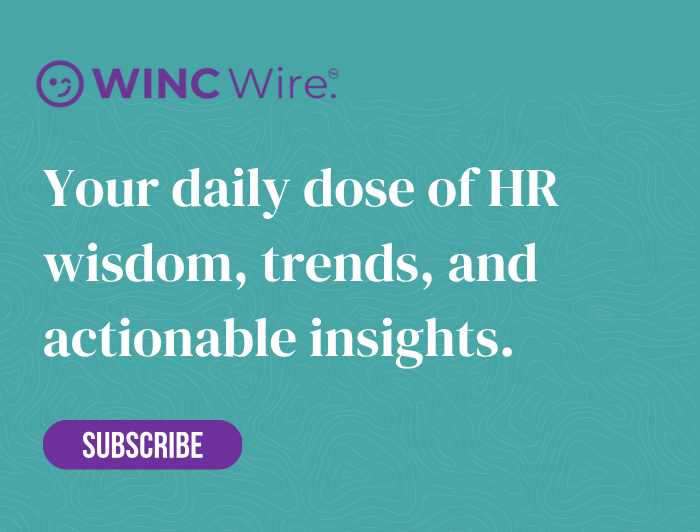3 Steps to Strengthen ‘Mental Fitness’ in Demanding Workplaces
We’ve become remarkably comfortable talking about physical fitness in professional settings. Nobody blinks when colleagues discuss their marathon training or gymnasium routines. We celebrate employees who prioritise their physical health, recognising that stronger bodies contribute to better performance. Yet mention mental fitness, and the conversation often becomes awkward, vague or conspicuously absent altogether.
This disparity reveals something troubling about how we approach workplace wellbeing. We’ll invest in standing desks and subsidised gym memberships whilst simultaneously creating environments that systematically erode psychological resilience. We’ll champion work-life balance in company values whilst rewarding those who respond to emails at midnight. The contradiction isn’t just hypocritical – it’s unsustainable.
Demanding workplaces aren’t inherently problematic. Challenge drives growth; pressure can sharpen focus; ambitious goals inspire excellence. The issue emerges when demand becomes relentless, when intensity never abates, when the workplace extracts psychological resources faster than people can replenish them. That’s not high performance – it’s slow-motion burnout.
Mental fitness offers a fundamentally different approach. Rather than simply managing stress after it overwhelms us, mental fitness builds the psychological capacity to navigate demanding environments whilst maintaining wellbeing. It’s proactive rather than reactive, preventative rather than remedial. And crucially, it’s something organisations can actively cultivate rather than merely encourage through wellness posters in the kitchen.
Step 1: Build Psychological Resilience Through Structured Recovery
Here’s what most organisations misunderstand about resilience: it isn’t about toughening up or pushing through. Genuine resilience emerges from the relationship between stress and recovery. Apply stress without adequate recovery, and you don’t build strength – you create breakdown.
Athletes understand this intuitively. Elite training programmes carefully balance intensity with rest, recognising that adaptation happens during recovery, not during the workout itself. Yet workplace culture often celebrates the opposite – presenteeism, always-on availability, and the dubious badge of honour that comes from never taking holiday.
Building psychological resilience requires deliberate recovery practices embedded into the working day, not relegated to evenings and weekends. This means creating protected time for activities that genuinely restore mental resources rather than simply offering generic wellness initiatives that employees are too busy to use.
Micro-breaks represent the foundation. Research indicates that brief interruptions from cognitively demanding work – even five minutes every hour – significantly improve sustained attention and reduce fatigue. But these breaks must involve genuine disengagement. Scrolling through work emails doesn’t count. Switching from one screen-based task to another doesn’t count. Effective micro-breaks involve physical movement, genuine mental rest or activities that engage different cognitive systems entirely.
Transition rituals matter enormously. The boundary between work and personal life has become dangerously porous, particularly in remote and hybrid environments. Without commutes or physical office departures to mark the transition, many employees find themselves perpetually half-working, never fully engaged in either domain. Encourage deliberate closure rituals – reviewing tomorrow’s priorities, shutting down work applications, physical activity that signals the workday’s end. These small practices create psychological boundaries that prevent work from colonising all available mental space.
Protect deep work periods rigorously. Constant interruption isn’t just irritating; it’s psychologically depleting. Each context switch consumes mental resources, leaving people exhausted without accomplishing meaningful work. Organisations can support mental fitness by establishing norms around protected focus time – periods where meetings are prohibited, instant messaging expectations pause, and people can engage in sustained, uninterrupted work. This isn’t about productivity hacks; it’s about creating conditions where psychological resources aren’t constantly fragmented.
Step 2: Cultivate Psychological Safety as Organisational Infrastructure
Mental fitness deteriorates rapidly in environments where people feel unable to express concerns, admit mistakes or show vulnerability. When employees expend enormous energy managing impressions, concealing struggles and maintaining facades of perpetual capability, little resource remains for actual work – let alone for wellbeing.
Psychological safety isn’t a soft skill or cultural nice-to-have. It’s fundamental infrastructure for sustainable high performance. Research consistently demonstrates that teams with higher psychological safety achieve better outcomes, innovate more effectively and experience lower burnout rates. Yet many demanding workplaces inadvertently penalise the very behaviours that build psychological safety.
Model vulnerability from leadership. Psychological safety flows downward through organisational hierarchies. When leaders acknowledge their own uncertainties, discuss their mental health practices or admit mistakes openly, they create permission for others to do likewise. This isn’t about oversharing or burdening teams with leadership anxieties – it’s about demonstrating that being human isn’t incompatible with being professional.
Consider how leaders discuss workload and capacity. Phrases like “I’m at capacity this week and need to decline this project” or “I’m taking Friday afternoon off to recharge” signal that boundaries are acceptable rather than career-limiting. Conversely, when leaders boast about working through weekends or responding to emails during holiday, they establish norms that erode mental fitness regardless of what official policies claim.
Redesign how mistakes are handled. In psychologically safe environments, errors become learning opportunities rather than occasions for blame. This requires deliberate process changes, not just cultural aspiration. After-action reviews should focus on systemic factors and improvement rather than individual culpability. When mistakes occur, the first question should be “what can we learn?” rather than “who’s responsible?”
Create structured channels for expressing difficulty. Waiting until someone reaches crisis point before offering support is far too late. Organisations need normalised, low-stakes mechanisms for people to signal they’re struggling before situations become acute. Regular check-ins that explicitly invite honesty about workload and wellbeing – and more importantly, that respond meaningfully when concerns are raised – prevent small issues from escalating into major problems.
This requires training managers to recognise early warning signs and respond appropriately. Too often, managers notice declining performance or engagement but lack the skills or confidence to address underlying wellbeing concerns. Equipping leaders with basic mental health literacy and clear pathways for supporting struggling team members transforms organisational capacity to maintain mental fitness.
Step 3: Establish Sustainable Work Design as Standard Practice
Individual resilience strategies and psychologically safe cultures are essential, but insufficient if the fundamental work design itself remains unsustainable. No amount of mindfulness meditation compensates for chronically excessive workloads, unrealistic deadlines or role ambiguity.
Mental fitness requires work that’s genuinely doable within reasonable hours, with adequate resources and clear expectations. This sounds obvious, yet countless organisations operate in perpetual crisis mode, treating unsustainable intensity as normal rather than exceptional.
Conduct honest workload assessments. Many organisations have only the vaguest understanding of actual capacity versus demand. They continue adding responsibilities without removing others, assuming people will simply stretch to accommodate. Regular workload audits – examining what people are actually doing versus what they’re nominally employed to do – often reveal shocking mismatches. These assessments must involve employees themselves, who understand workload realities far better than spreadsheets suggest.
When audits reveal overload, organisations face a choice: increase resources, reduce scope or accept lower quality. What’s not sustainable is maintaining the fiction that people can perpetually deliver more with less. Mental fitness depends on this organisational honesty about trade-offs.
Build recovery time into project planning. Most project timelines optimistically assume continuous productivity without accounting for the reality that people need recovery periods after intense effort. Building explicit recovery phases into work cycles – periods of lower intensity following major deliverables – prevents the accumulation of psychological fatigue that eventually manifests as burnout or errors.
Establish clear boundaries around availability. Technology enables constant connectivity, but constant connectivity demolishes mental fitness. Organisations must set explicit norms about response expectations outside working hours. This means more than suggesting people disconnect – it requires leadership modelling those boundaries and ensuring that career progression doesn’t depend on perpetual availability.
Some organisations have implemented technical solutions: email systems that delay delivery of messages sent outside working hours, or that automatically archive messages received during holiday. These tools work because they remove individual responsibility for boundary-setting, normalising disconnection as organisational standard rather than personal preference.
Moving Beyond Wellness Theatre
Mental fitness in demanding workplaces isn’t about yoga classes or meditation apps – though these can be valuable components of broader strategies. It’s about fundamentally redesigning how work happens, how pressure is managed and how organisations relate to the humans who comprise them.
The organisations that successfully build mental fitness don’t treat wellbeing as peripheral to performance. They recognise that sustainable high performance depends on psychological resilience, that innovation requires psychological safety, and that long-term success demands work designed for humans rather than machines.
This requires moving beyond wellness theatre – superficial initiatives that gesture toward wellbeing whilst leaving underlying pressures untouched. It demands genuine organisational commitment: leaders willing to model healthy practices, managers equipped to support team wellbeing, and work design that treats mental fitness as essential infrastructure rather than optional luxury.
Because here’s the reality: demanding workplaces will continue to exist. Challenge and intensity aren’t disappearing. But organisations can choose whether that demand systematically depletes people or whether it occurs within structures that build and maintain psychological capacity. That choice determines whether you’re creating excellence or simply manufacturing burnout with better branding.
Mental fitness isn’t about making work easy. It’s about making demanding work sustainable. And that difference matters enormously.






